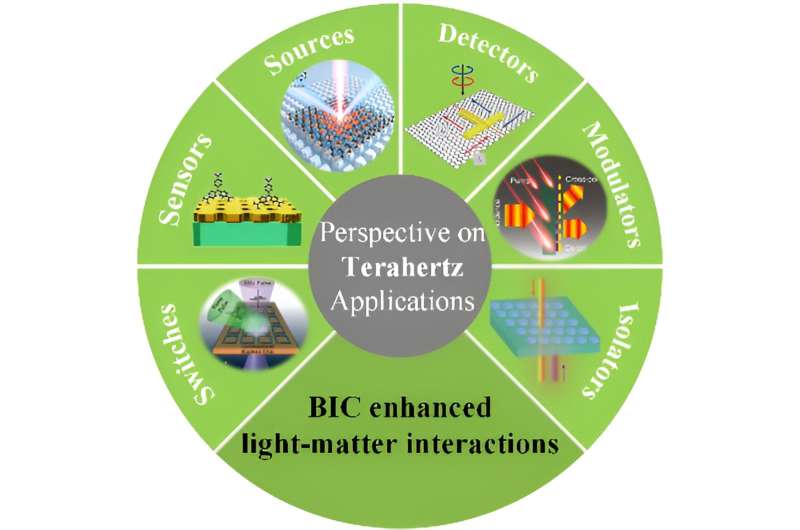This article has been reviewed according to Science X's editorial process and policies. Editors have highlighted the following attributes while ensuring the content's credibility:
fact-checked
proofread
Recent advances in, and perspectives on, photonic bound states in the continuum

The interactions between light and matter are a central research focus in the field of photonics. Resonant cavities with high quality factors (Q) are capable to confine light effectively and exhibit ultra-long radiation lifetimes, making them essential for applications such as lasers, modulators, nonlinear optics, and quantum computing.
Traditional methods for light confinement involve microring resonators, Bragg microcavities, photonic crystals, and so on. Bound states in the continuum (BICs) are unique nonradiative modes that exist within the radiation continuum, above the light line. However, their intrinsic optical fields can still be confined within the structure without leaking into free space, thereby exhibiting an infinite radiative Q.
BICs provide a generalized approach to achieve extremely high-Q resonant cavities, offering a powerful mechanism for enhancing the light-matter interactions. Over the past few decades, BICs have been established in various photonic structures, and the fundamental physical mechanisms have been greatly explored.
In the past few years, abundant articles have reported various applications of BICs in different areas. While there are also several review articles on photonic BICs providing guidance and summarizing progress in recent years, the perspectives of BICs in terahertz photonics were overlooked.
Recently, Prof. Longqing Cong's team at Southern University of Science and Technology published an online review article entitled "Recent advances and perspective of photonic bound states in the continuum" in the journal Ultrafast Science. This article provides a perspective of BICs on applications in terahertz photonics after summarizing the most recent results and interesting applications of photonic BICs, which will update the literature library in this rapidly developing field.
The review starts by discussing interpretations of BICs from two perspectives, namely, the far-field interference of multipoles and the near-field properties of topological charges. Recent works on manipulating the far-field radiation properties of BICs through engineering topological charges are then highlighted.
Subsequently, the most recent developments in applications are categorized into chiral light and vortex beam generation, harmonics generation, sensors, and lasing. Finally, a comprehensive overview of the current progress of BICs in terahertz regime is summarized, and their potential applications in terahertz generation, detection, modulation, sensing, and isolation are envisioned.
The recent advancements in BICs, both in theory and applications, have profound implications for engineering resonances in photonic devices. As the field of photonics continues to expand in industrial applications, BIC-enabled photonics is expected to remain a highly active research area, driving further progress not only in the classical optical regime but also in quantum photonics.
More information: Guizhen Xu et al, Recent Advances and Perspective of Photonic Bound States in the Continuum, Ultrafast Science (2023). DOI: 10.34133/ultrafastscience.0033
Provided by Ultrafast Science





















